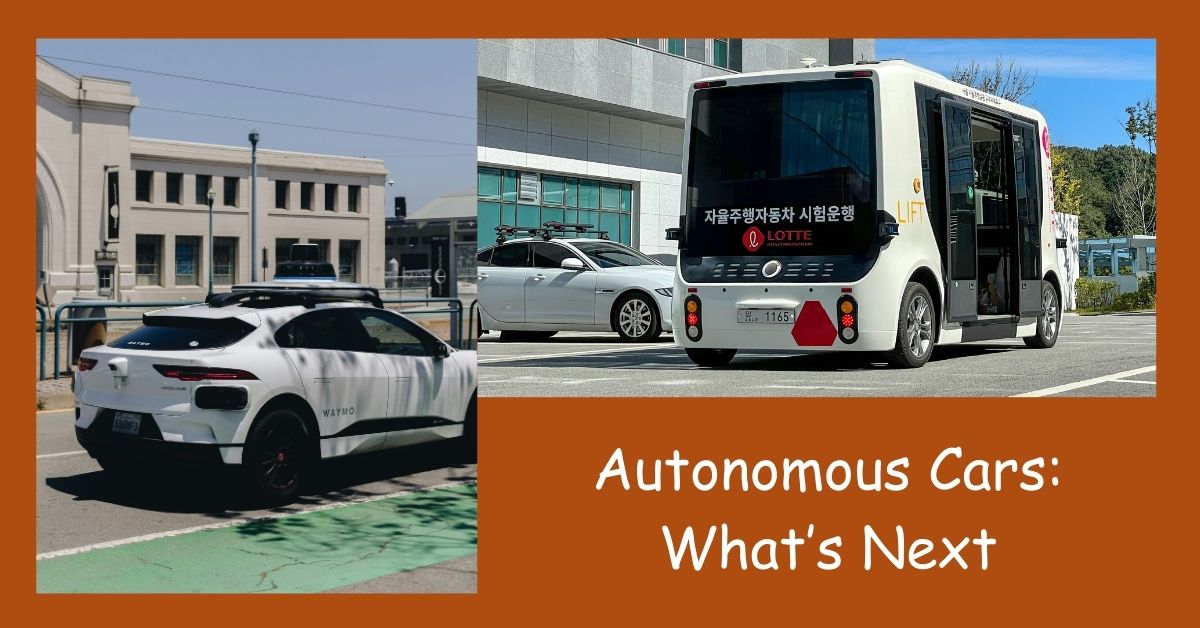Not long ago, self-driving cars sounded like something straight out of a sci-fi movie. Today, they’re not only real — they’re actively being tested on public roads and, in some cities, already transporting passengers without a human driver behind the wheel.
But here’s the thing: autonomous cars aren’t just another tech gadget. They represent one of the biggest shifts in transportation since the invention of the automobile itself. If electric vehicles are changing what powers our cars, autonomous technology is changing how we use them entirely.
The question isn’t if self-driving cars will become part of our daily lives — it’s when and how fast. Let’s explore what’s coming next for autonomous vehicles, what challenges remain, and how they could reshape the world around us.
1. Understanding the Levels of Autonomy
Before we look ahead, we need to understand where we are right now. The Society of Automotive Engineers (SAE) has defined six levels of vehicle autonomy:
- Level 0: No automation (human does everything)
- Level 1: Driver assistance (like cruise control)
- Level 2: Partial automation (car can steer and accelerate, but driver must stay alert)
- Level 3: Conditional automation (car drives itself in some conditions, human takes over when needed)
- Level 4: High automation (car can handle all driving tasks in certain areas without human input)
- Level 5: Full automation (no human driver needed at all, anywhere)
Most cars today, even the fancy ones, are at Level 2 or just entering Level 3. That means the fully driverless experience we dream about is still being perfected.
2. The Technology Making It Possible
Self-driving cars rely on a combination of hardware and software that constantly scans, processes, and reacts to the world around them. This includes:
- LiDAR (Light Detection and Ranging): Creates a 3D map of the surroundings using laser beams.
- Radar: Detects the speed and distance of objects, even in poor weather.
- Cameras: Provide visual data for object recognition.
- AI Algorithms: Process all the data in milliseconds to make driving decisions.
What’s next? Expect smaller, cheaper, and more powerful sensors, plus AI models that learn from billions of miles of real-world driving data. The more these systems learn, the safer and smoother autonomous cars will become.
3. The Push from Big Players
It’s not just tech startups working on self-driving cars anymore. Automakers, ride-hailing companies, and even delivery services are investing heavily. Companies like Tesla, Waymo, Cruise, and Baidu are racing to be the first to launch large-scale autonomous fleets.
We’re also seeing partnerships between car manufacturers and software companies to accelerate development. For example, traditional automakers are teaming up with AI specialists to combine decades of automotive experience with cutting-edge tech expertise.
4. How Autonomous Cars Will Change Daily Life
Once self-driving cars become mainstream, the impact will go far beyond just “not having to drive.” Here’s what we can expect:
- Safer roads: Autonomous cars don’t get tired, distracted, or drunk. They can potentially prevent the majority of accidents caused by human error.
- More free time: Imagine reading, working, or even napping while your car takes you to your destination.
- Reduced traffic congestion: AI can optimize routes and speeds for smoother traffic flow.
- Increased mobility: Elderly people, people with disabilities, and those without a driver’s license will gain new independence.
5. Challenges on the Road Ahead
While the future looks promising, we’re not there yet. The key hurdles include:
- Safety and trust: People need to feel confident that autonomous cars are safer than human drivers.
- Regulation: Governments must update traffic laws, liability rules, and safety standards.
- Edge cases: Self-driving systems still struggle with unusual or unpredictable situations, like sudden road closures or complex weather conditions.
- Cybersecurity: Cars connected to the internet must be protected against hacking attempts.
Overcoming these challenges will take time — but each new test, software update, and public trial gets us closer to full autonomy.
6. The Role of AI in Future Autonomous Cars
The next big leap for autonomous vehicles will come from AI that can predict human behavior. For example, anticipating that a pedestrian looking at their phone might suddenly step into the road, or that a cyclist might swerve to avoid a pothole.
We’ll also see collaborative AI, where vehicles communicate with each other and with smart city infrastructure to share traffic data in real time. This will help reduce accidents and improve traffic efficiency dramatically.
7. A Glimpse Into the Next Decade
So, what’s next? Here’s a realistic prediction:
- By 2027: Fully autonomous shuttles in select cities for short distances.
- By 2030: Widespread Level 4 self-driving cars in urban areas with strong infrastructure.
- By 2035: Personal cars with Level 5 autonomy become available to the public.
The rollout won’t be uniform. Big cities will see autonomous cars first, while rural areas may take longer due to infrastructure and connectivity requirements.
Conclusion
Autonomous cars are coming — and they’re bringing a transportation revolution with them. While we still have technological, legal, and cultural hurdles to clear, the direction is clear: a safer, more efficient, and more connected driving experience.
In the next decade, we might look back and laugh at the idea of spending hours behind the wheel, just as we now marvel at how people once navigated without GPS. The journey toward full autonomy is exciting, and we’re just getting started.
Frequently Asked Questions
1. Will autonomous cars completely eliminate accidents?
Not entirely. While they can drastically reduce accidents caused by human error, technical malfunctions, unpredictable road events, and other factors mean accidents may still occur — but far less frequently.
2. How much will an autonomous car cost?
Early models with full autonomy will likely be expensive, similar to luxury vehicles today. However, as technology matures and production scales, prices will drop, making them more accessible to the average consumer.
